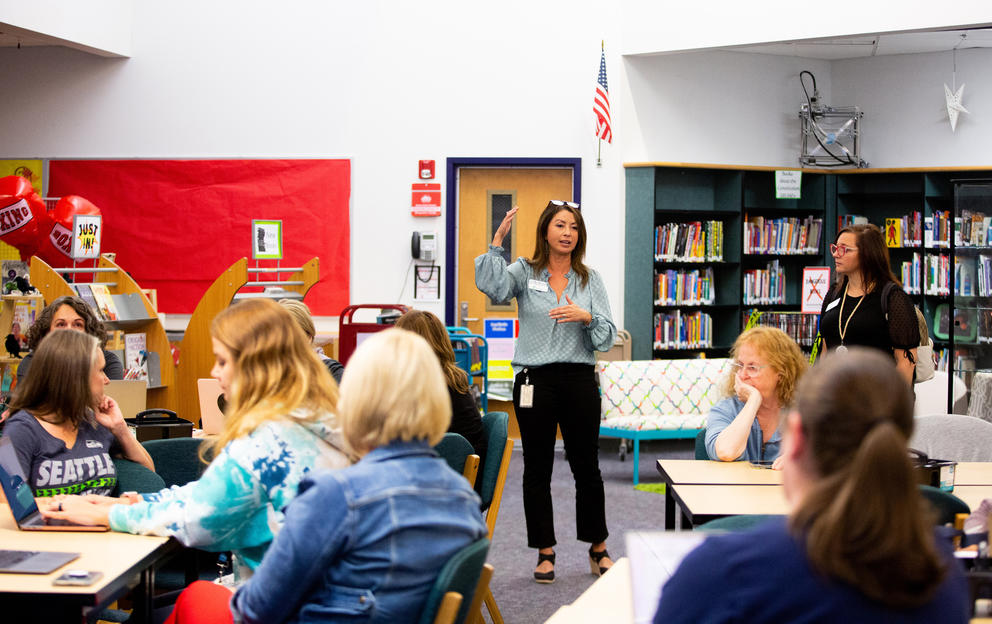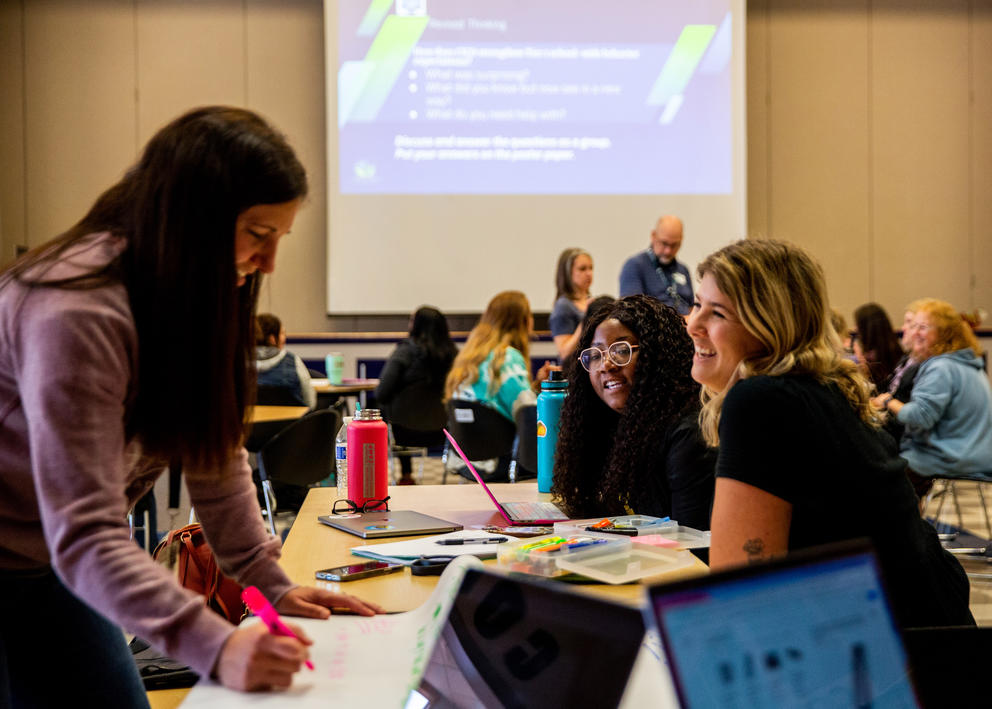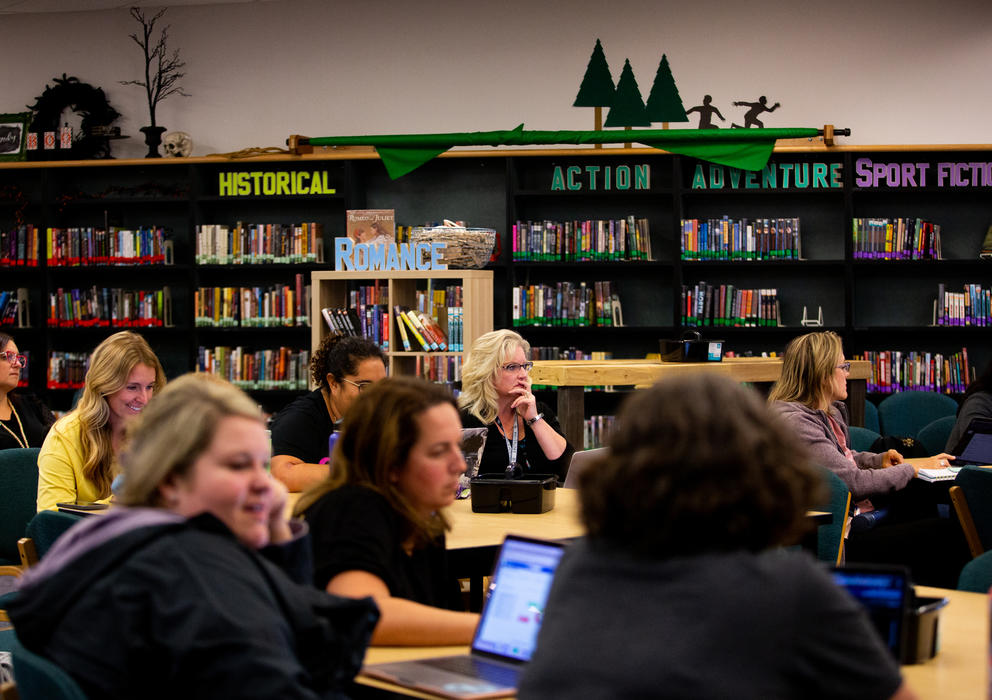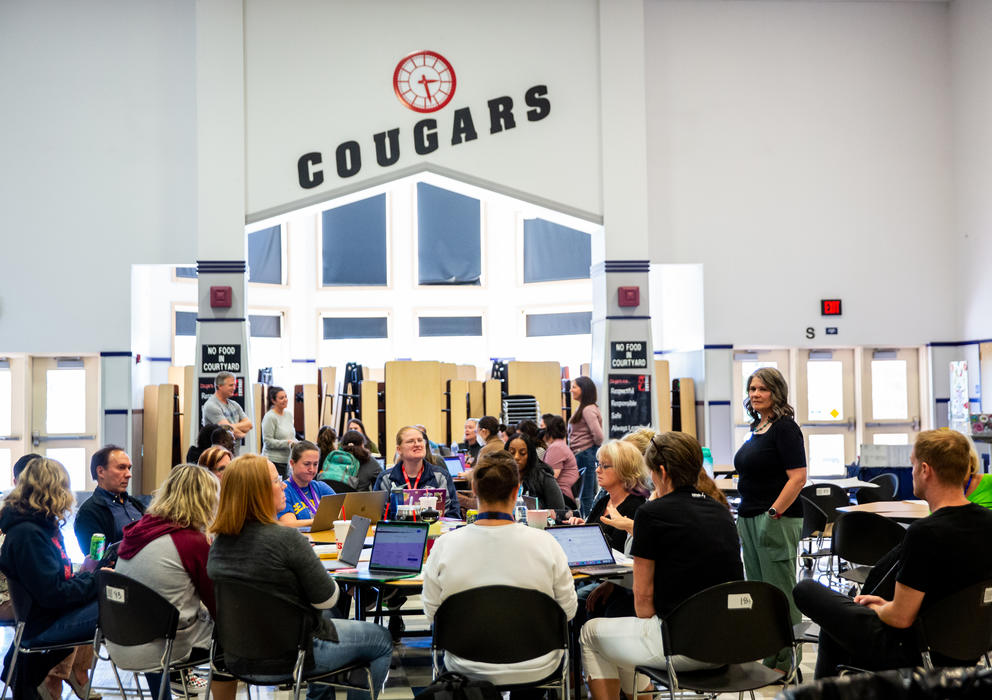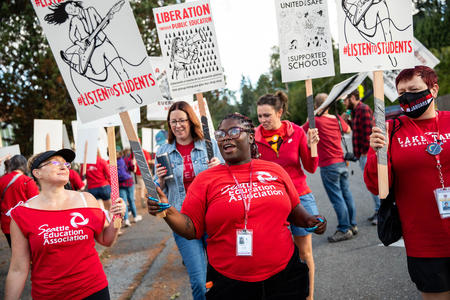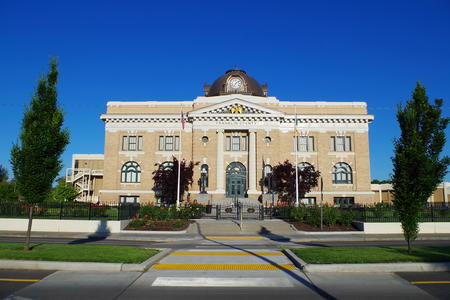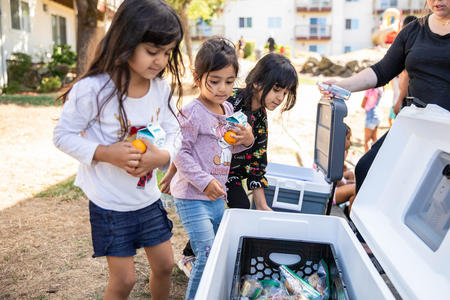Washington K-12 schools have spent about half of $2.6 billion in combined relief, largely intended to help schools navigate immediate coronavirus-related challenges. Now as they look to the remaining $1.3 billion, administrators say they fear federal deadlines in 2025 will cut short projects addressing lost academic progress, student mental health and school air quality.
“People were getting criticized that they weren’t spending the money fast enough,” said Joel Aune, executive director of the Washington Association of School Administrators. “We’re being criticized because we’re being careful with the money.”
More than 40 Washington school leaders joined hundreds of districts from across the country in an Aug. 29 letter to the U.S. Department of Education asking for more time to spend their federal Elementary and Secondary School Emergency Relief funds, which were part of the three national COVID-19 recovery packages. Districts that signed on span the state and include Bellevue, Castle Rock, Yakima, Highline, Coupeville, Kiona-Benton City, Oak Harbor and others.
“The staggering social-emotional and mental health needs of our students requires continued staffing and programming,” the letter reads. “Additional time to liquidate the … funds ensures that we maintain the critical pandemic-related services that our students require to overcome the challenges of the past three academic years.”
Administrators also told Crosscut the pending deadlines could undermine long-term contracts and risk forfeiting money on equipment caught in supply chain delays. And though the federal government will offer districts a chance to apply for case-by-case extensions, school administrators say the process is unclear.
Left to right: Academic counselor Alison Von Stein, family resource coordinator Christney Kpodo, and school social worker Lauren Riley, all of Challenger High School, work in a small group during a Bethel School District Behavioral Health Team presentation and training with the district's counselors and social workers at Cougar Mountain Middle School in Graham, Wash., Friday, Sept. 23, 2022. (Lindsey Wasson/Crosscut)
Though public schools reopened their physical classrooms in 2021 after at least a year of remote learning, the aftermath of the pandemic continues to weigh on them. Students are still catching up academically to where their grade-level peers were before the pandemic, according to Washington’s state Office of Superintendent of Public Instruction (OSPI). And the social effects of pandemic-induced isolation are likely just beginning to be understood.
“Mental health is not going to take necessarily just one or two years to solve the problems that exist to begin with, let alone the ones that have been added on due to COVID-19 isolation,” said Tom Seigel, Superintendent of Bethel School District in Pierce County.
So far Bethel has used aid money to hire four new staff to expand a behavioral health team and contracted with a company called Hazel Health to offer access to counselor visits for all of the district’s 20,000 students through their school-issued tablets.
Districts can also use the money for wellness expenses such as additional school nurses and counselors to help with student mental health. Students nationwide have reported rising levels of stress and anxiety in the past two years.
This story is a part of Crosscut’s WA Recovery Watch, an investigative project tracking federal dollars in Washington state.
Seigel said those impactful programs face being cut or curtailed if the current deadlines remain in place. Districts must allocate the largest chunk of money by September 2024 and unload it by January 2025 – or lose access to those federal dollars.
Washington school districts received a combined $2.6 billion in pandemic aid from the Elementary and Secondary School Emergency Relief fund (ESSER), which came in three rounds based on federal Title 1 poverty rates in each district. Allocations ranged from $15,222 for the approximately 60 students in the Wishram School District in Klickitat County to $74 million for Seattle and $63 million for Spokane, among the largest districts in the state.
OSPI administers the ESSER funds and tracks spending, including how much each district was allocated and each district’s expenditures so far.
State data show the first round – sent to states and districts as part of the Coronavirus Aid Relief and Economic Security (CARES) Act in 2020 when officials suddenly closed school buildings nationwide and launched widespread remote learning in a matter of weeks – is nearly 100% spent.
“They were a godsend for districts for the challenges and expenses of running a school during COVID,” Aune said.
Rounds two and three came from subsequent COVID-19 aid packages; the third and largest pot is from the 2021 American Rescue Plan. Much of Washington’s ESSER money from rounds two and three has yet to be allocated – just over $1.3 billion.
Find tools and resources in Crosscut’s Follow the Funds guide to track down federal recovery spending in your community.
Along with building improvements, and mental health and wellness, ESSER dollars can be used to address learning loss or academic setbacks exacerbated by pandemic disruption, through programs such as summer schools or tutoring.
However, with the second and third grant phases, school districts are not only trying to recover the ground lost in the past two years; administrators are also attempting to make the effects of this spending last, Aune said.
Aune, a former superintendent who led the Snoqualmie Valley and Colfax districts, described the 2025 spending deadline as facing a “cliff” – particularly for those programs effective at improving student academic and mental health outcomes.
“They see the benefit for kids, and now they are jammed up,” he said. "They have to find the money to fund the program or the program goes away.”
Extending the expenditure deadline would allow a district to, for instance, pay a mental health counselor over two years by hiring someone part-time, budgeting other pots of money or finding other grants to stretch the dollars for a full-time counselor, Aune said, adding that an answer from the federal government will help districts consider their strategies on budgeting the remainder of their allocations.
Administrators also told Crosscut that shortages in construction labor and materials threaten their ability to fit key school infrastructure purchases, such as HVAC systems to improve classroom air quality, into that window.
“People are short, supply chains are short, you’re trying to fit it into what you’re already doing,” said Tim Payne, superintendent of Ephrata School District in Grant County. “All of that takes time.”
The Aug. 29 letter, signed by 683 district leaders nationally, follows similar previous requests, including one in July from several national education advocacy groups that proposed stretching the deadline to December 2026.
The federal program has provided a partial workaround: Individual districts can request an additional 18 months to expend their ESSER funds, according to a May 13 letter from a U.S. Department of Education official. However, these “late liquidation” requests are granted on a case-by-case basis and require the state education agency to facilitate the process.
Washington’s OSPI has not received any such requests yet, according to Chief Financial Officer T.J. Kelly, who said he expected to see more districts reach out as deadlines approach next year. But it’s not entirely clear how to even apply for that federal extension, Kelly said, adding that he asked federal education officials last year to clarify the process.
The U.S. Department of Education did not respond to an email asking how many districts have so far applied for “late liquidation” extensions. A spokesperson for the department acknowledged receipt of the letter and wrote in an email that they “look forward to directly responding to the signees,” but did not say when.
Seigel, the Bethel School District superintendent, said schools have been under-resourced for many years for things like mental health support, small class sizes and special education services.
The influx of federal money helps, but one big drop of resources doesn’t address what Seigel said he sees as an ongoing lag between Washington state education funding and what schools are tasked with doing for students.
“That federal ESSER money is a Band-Aid,” Seigel said. “It’s a big Band-Aid, it’s a good Band-Aid, but … there’s a longer, ongoing, endemic funding flaw at the state level.”
Bethel School District counselors and social workers work in small groups during a Behavioral Health Team presentation and training at Cougar Mountain Middle School near Issaquah. Bethel has used aid money to hire four new staff to expand the Behavioral Health Team and contracted with a company called Hazel Health to offer access to counselor visits for the district’s 20,000 students through their school-issued tablets. (Lindsey Wasson/Crosscut)

